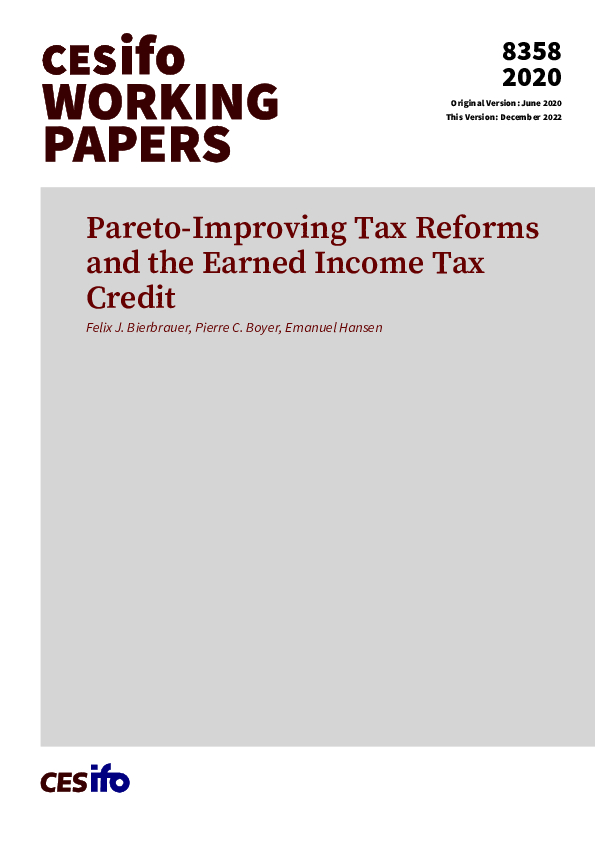Pareto-Improving Tax Reforms and the Earned Income Tax Credit
CESifo, Munich, 2020
CESifo Working Paper No. 8358

We develop a new approach for the identification of Pareto-improving tax reforms. This approach yields necessary and sufficient conditions for the existence of Pareto-improving reform directions. A main insight is that “Two brackets are enough”: When the system cannot be improved by altering tax rates in one or two income brackets, then there is no continuous reform direction that is Pareto-improving. We also show how to check whether a given tax reform is Pareto-improving. We use these tools to study the introduction of the Earned Income Tax Credit (EITC) in the US in 1975. A robust finding is that, prior to the EITC, the US tax-transfer system was not Pareto-efficient. Under plausible assumptions about behavioral responses, the 1975 reform was not Pareto-improving. Qualitatively, though, it had the right properties: A similar reform with earnings subsidies made available to a broader range of incomes would have been Pareto-improving.
Public Finance
Labour Markets